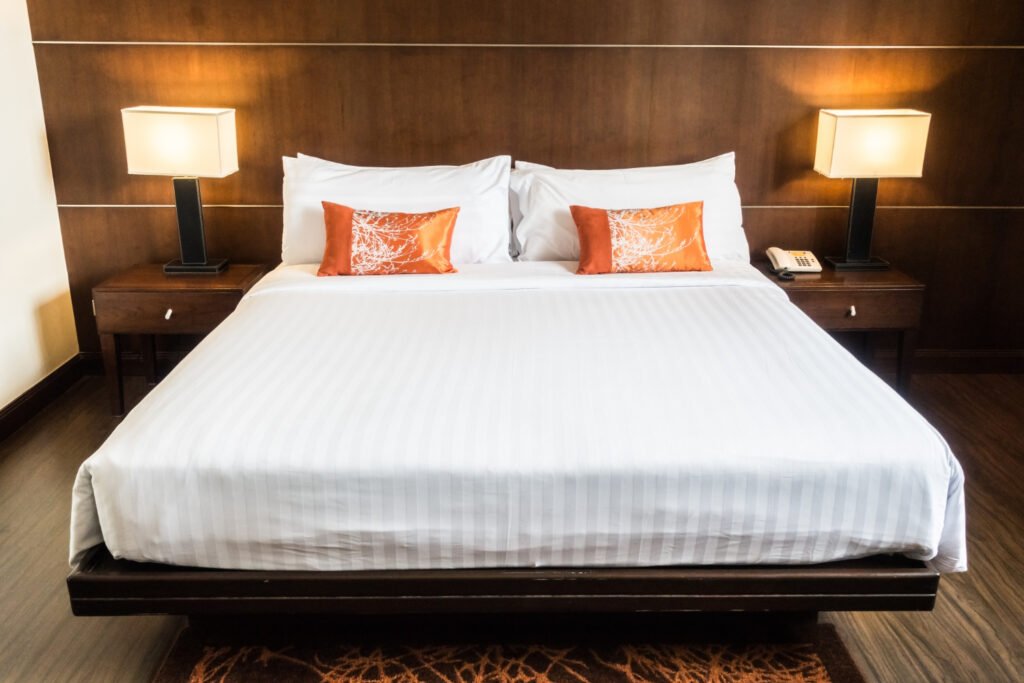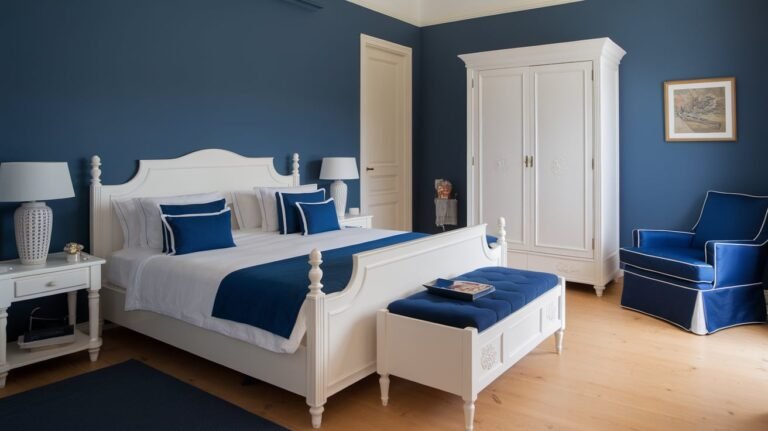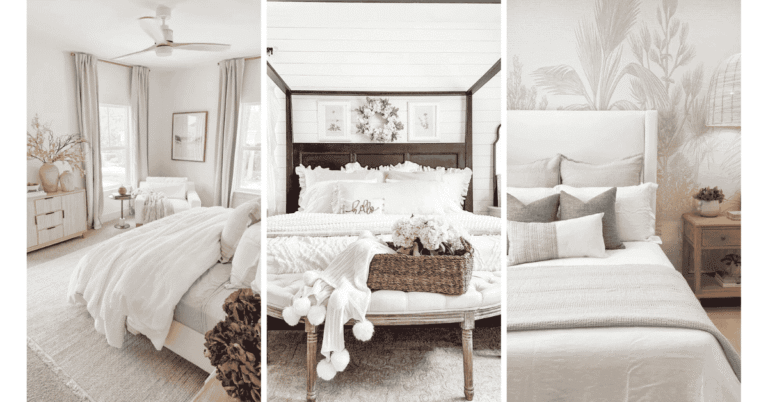How to Make Your Bed Comfy for a Restful Night’s Sleep
Making a bed truly comfortable requires attention to the right combination of support and softness. Choosing the proper mattress, adding layers like a mattress topper or featherbed, and selecting quality bedding materials all contribute to a cozy sleeping environment. Comfort comes from balancing support with softness to suit individual needs.
Small details such as pillows, duvet inserts, and breathable sheets play an important role in enhancing comfort. Adjusting these elements based on personal preference can transform a simple bed into a relaxing sanctuary that promotes better rest.
Understanding how to layer bedding and pick materials helps create a bed that invites relaxation night after night. These practical steps ensure that comfort isn’t just a feeling but a dependable part of the sleep experience.
Choosing the Right Mattress
Choosing the right mattress involves understanding how firmness impacts comfort, the benefits and drawbacks of different materials, and the role of mattress size in supporting restful sleep. These factors contribute directly to the overall feel and support of the bed.
Selecting Mattress Firmness
Mattress firmness affects how well a bed supports the body and relieves pressure points. Firmness levels typically range from soft to extra firm.
- Soft mattresses suit side sleepers by cushioning shoulders and hips.
- Medium-firm mattresses work well for back sleepers by providing balanced support.
- Firm mattresses are often recommended for stomach sleepers or heavier individuals to avoid sinking too deeply.
Testing a mattress by lying down for several minutes is critical. The right firmness should prevent discomfort and allow the spine to maintain a natural alignment.
Considering Mattress Material
The mattress material influences durability, temperature regulation, and feel. Common types include:
- Memory foam: Conforms closely to the body for pressure relief but may retain heat.
- Innerspring: Offers strong support with good airflow, ideal for those who prefer a bouncier feel.
- Hybrid: Combines foam and springs to balance comfort and support.
- Latex: Provides buoyant support and natural cooling properties, good for people with allergies.
Choosing the material depends on personal comfort preferences, sleep temperature, and any specific support needs.
Importance of Mattress Size
The mattress size affects space and sleep quality. It should comfortably fit the sleeper(s) and allow free movement during the night.
- Twin and Twin XL: Suitable for children or single adults with limited space.
- Full: Best for single sleepers who want extra room.
- Queen: Popular for couples or individuals seeking more space.
- King and California King: Offer maximum room for couples or those who move frequently during sleep.
Choosing the right mattress size ensures there is enough room for proper sleep posture and comfort.
Bedding Essentials
Creating a comfortable bed depends on selecting the right materials that balance softness, durability, and support. Attention to each layer—sheets, comforters, and protectors—ensures a better sleep environment and extends the life of the bedding.
High-Quality Sheets and Pillowcases
Sheets and pillowcases form the direct contact with the skin, making their quality crucial. Cotton, particularly long-staple varieties like Egyptian or Pima, offers breathability and softness. Thread count between 300 and 600 provides a good balance of durability and smoothness without overheating.
For cooler climates or preference, flannel or brushed cotton enhances warmth. Satin or silk pillowcases reduce friction, which can help with hair and skin health. Proper weaving, like percale for a crisp feel or sateen for a silky touch, affects texture and temperature regulation.
Durability and easy care are also important. Sheets with a tighter weave resist pilling better, contributing to comfort over time. Choose neutral or calming colors to complement the bedroom environment.
Choosing the Perfect Comforter or Duvet
The comforter or duvet is the main source of warmth and coziness. Down-filled options provide lightweight insulation but may not suit allergy sufferers. Synthetic fills, such as microfiber or polyester, are hypoallergenic and retain heat effectively.
Fill power indicates warmth level; 600–800 fill power suggests good loft and insulation for colder seasons. For warmer environments, lightweight or all-season comforters prevent overheating while maintaining comfort.
The outer fabric should be breathable, often cotton or a cotton blend, to help regulate temperature. Duvets with removable covers facilitate easy cleaning and customization. Consider the thread count and fabric finish to avoid excessive static or roughness.
Selecting Mattress Protectors
A mattress protector preserves cleanliness and extends mattress life while increasing comfort. Choose protectors with waterproof membranes that do not compromise breathability to avoid heat buildup during sleep.
Materials like bamboo fabric or cotton blends with moisture-wicking properties improve temperature regulation. A fitted design with deep pockets ensures a secure fit on mattresses of various thicknesses.
Some protectors also provide allergen barriers, protecting from dust mites and allergens. Noise level matters; quieter protectors avoid disrupting sleep with crinkling sounds. Removable and washable options support hygiene and ease of maintenance.
Layering for Comfort
A well-layered bed enhances sleep quality by combining support, warmth, and softness. Each element plays a specific role, building a comfortable and inviting space.
Adding Mattress Toppers
Mattress toppers improve pressure relief and adjust mattress firmness. Memory foam toppers contour to the body, reducing pressure points, while latex offers a responsive, breathable surface. Feather or down toppers add softness but require regular fluffing to maintain loft.
Consider the thickness based on mattress condition; 2-4 inches is typical. A topper with a removable, washable cover helps maintain hygiene. Choosing hypoallergenic materials can benefit those with allergies, ensuring comfort without irritation.
Using Soft Blankets and Throws
Layering blankets adds warmth and texture. Start with a lightweight sheet or breathable blanket to regulate temperature during warmer nights. Add a midweight blanket, such as fleece or cotton, for year-round comfort. Top with a plush throw made from materials like wool or microfiber for extra coziness and style.
Keep blankets easily accessible for adjusting layers. Avoid heavy blankets that can trap heat excessively. Multiple layers allow customization for seasonal changes and personal preference.
Layering Pillows Strategically
Pillow arrangement affects both comfort and support. Use a firm pillow for neck support as the base. Stack one or two softer pillows in front for cushioning and to prop up sitting positions. Body pillows or bolsters can provide additional support for side sleepers or those needing extra lumbar support.
Choose pillow fillings based on firmness needs—memory foam for contouring, down for softness, or synthetic for allergen resistance. Keeping pillows refreshed and fluffed maintains their effectiveness.
Pillow Selection and Arrangement
Choosing the right pillows and placing them effectively can greatly enhance both comfort and style. Consider the material, purpose, and placement to create a supportive and visually appealing bed setup.
Identifying the Best Pillow Fill
The fill material impacts comfort and support. Common options include memory foam, down, feather, latex, and synthetic fills. Memory foam molds to the head and neck, offering firm support ideal for side sleepers. Down and feather provide softness and loft but less structural support, suitable for stomach sleepers or those who prefer a plush feel.
Synthetic fills tend to be hypoallergenic and maintain shape well, balancing support and comfort. Latex is durable and offers moderate firmness with good breathability.
Selecting a pillow fill depends on personal sleep position and any allergies or sensitivities. Choosing the right material helps maintain proper spinal alignment and prevents discomfort.
Arranging Decorative and Support Pillows
Effective pillow arrangement combines function with aesthetic appeal. Start by placing larger support pillows—such as sleepers or shams—against the headboard. Then add decorative pillows in front, mixing textures and sizes for balance.
A common strategy is using 2-3 large pillows at the back, followed by 2 medium-sized pillows, then 1-2 smaller or accent pillows in front. For king-sized beds, larger pillows work best; twin beds require smaller options.
Pillow arrangement should allow easy movement and support for sitting up. Using a mix of shapes and patterns can add visual interest without cluttering the bed.
Replacing Pillows for Optimal Support
Pillows lose their support over time, which can affect sleep quality. Generally, pillows should be replaced every 1-2 years. Memory foam and latex tend to last longer, often up to 3 years, while down and synthetic fills compress faster.
Signs it is time to replace pillows include visible lumps, flattened shape, and increased neck or shoulder pain. Regularly fluffing pillows can extend their life but does not restore lost support.
Replacing pillows with ones that match current sleep needs helps maintain comfort and proper posture throughout the night. It also refreshes the overall feel and look of the bed.
Temperature Control
Maintaining the right temperature in bed is essential for comfort and quality sleep. Selecting appropriate bedding materials and using temperature-regulating mattress pads can significantly improve sleep conditions year-round.
Choosing Bedding for Different Seasons
Bedding materials play a key role in temperature control. For warmer months, breathable fabrics like cotton and linen are preferred because they promote airflow and wick away moisture. These materials help keep the sleeper cool and dry.
In colder seasons, heavier fabrics such as flannel or wool provide better insulation. Layering with lightweight blankets instead of a single thick comforter allows for easy temperature adjustments. Using bedding designed for specific seasons prevents overheating or excessive chill.
Cooling and Heating Mattress Pads
Active temperature control can be achieved with mattress pads that offer cooling or heating functions. Cooling pads use water or air circulation to lower the bed’s temperature quickly, ideal for those with night sweats or hot sleeping environments.
Heating pads provide gentle warmth during cold nights and often come with adjustable temperature settings. Many models include moisture-wicking properties to keep the surface dry. Selecting a mattress pad with dual functions ensures comfort for varying climate conditions.
Keeping Your Bed Clean
Maintaining a clean bed is essential for comfort and health. Regular care prevents buildup of dirt, allergens, and bacteria that can disrupt sleep quality and cause discomfort.
Washing Bedding Regularly
Bedding should be washed every one to two weeks. This includes sheets, pillowcases, blankets, and duvet covers. Use hot water when possible to kill dust mites and allergens effectively.
Choosing the right detergent matters. Opt for hypoallergenic or gentle detergents to avoid skin irritation. Fabric softeners can reduce fabric breathability, so it’s best to limit their use.
Rotate mattress protectors and pillow covers regularly. These layers provide additional protection and extend the lifespan of bedding and pillows by keeping contaminants out.
Allergy-Proofing Your Bed
To reduce allergens, mattress and pillow protectors with zipper closures create a barrier against dust mites and pet dander. These protectors should be cleaned frequently as well.
Vacuuming the mattress every month with a HEPA filter vacuum removes dust and other particles. Enclosing pillows and mattresses in allergy-proof covers further minimizes exposure.
Avoid clutter and plush items on the bed, as they can harbor dust and make cleaning difficult. Keeping bedding simple supports easier maintenance and reduces allergen accumulation.
Creating a Relaxing Bedtime Environment
A calm and inviting bedroom supports better sleep by reducing distractions and promoting relaxation. Attention to sensory details like scent and light, alongside maintaining an organized space, can significantly enhance comfort.
Using Calming Scents and Lighting
Soft lighting encourages the body to prepare for sleep by signaling relaxation. Warm, dim lights or lamps with adjustable brightness are preferable to harsh overhead lighting.
Using calming scents such as lavender or chamomile through a diffuser or pillow spray can aid in reducing stress. These aromas have been shown to help slow the heart rate and promote a sense of calm.
Avoid blue light emitted by screens at least an hour before bed, as it interferes with melatonin production. Instead, opt for candles or salt lamps to create a gentle glow that supports the body’s natural sleep cycle.
Decluttering the Bed Area
A tidy bed area minimizes visual stress and mental clutter that can disrupt rest. Keeping surfaces clear and storing away non-essential items creates a cleaner space that feels more inviting.
Items like books, electronics, or clothes should have designated storage outside the bed area. This prevents distractions and makes the bed purely a place for rest and comfort.
Organizing pillows and blankets neatly also contributes to a calming visual impression, making the bed more appealing and ready for sleep.
Maintaining Your Comfortable Bed
Regular maintenance is essential to keep a bed feeling comfortable and fresh. One of the most important tasks is washing bedding regularly, including sheets, pillowcases, and duvet covers. This helps remove dust, sweat, and allergens that can affect sleep quality.
Fluffing and rotating pillows frequently ensures they retain proper support. Pillows often lose shape over time, reducing comfort and potentially causing neck pain.
Mattress care is equally important. Using a mattress protector helps guard against spills and dust mites. Rotating or flipping the mattress every 3 to 6 months promotes even wear and preserves support.
Maintaining the right sleeping environment contributes to comfort. Keeping the bedroom cool and well-ventilated helps prevent overheating during sleep.
Tips for maintenance:
| Task | Frequency |
|---|---|
| Wash bedding | Weekly or biweekly |
| Fluff pillows | Weekly |
| Rotate/flip mattress | Every 3-6 months |
| Clean mattress protector | Monthly |
| Air out mattress | Occasionally |
Small habits like these contribute to a consistently comfortable and restful bed environment. Taking care of each bedding component prevents discomfort and extends the life of the bed.










